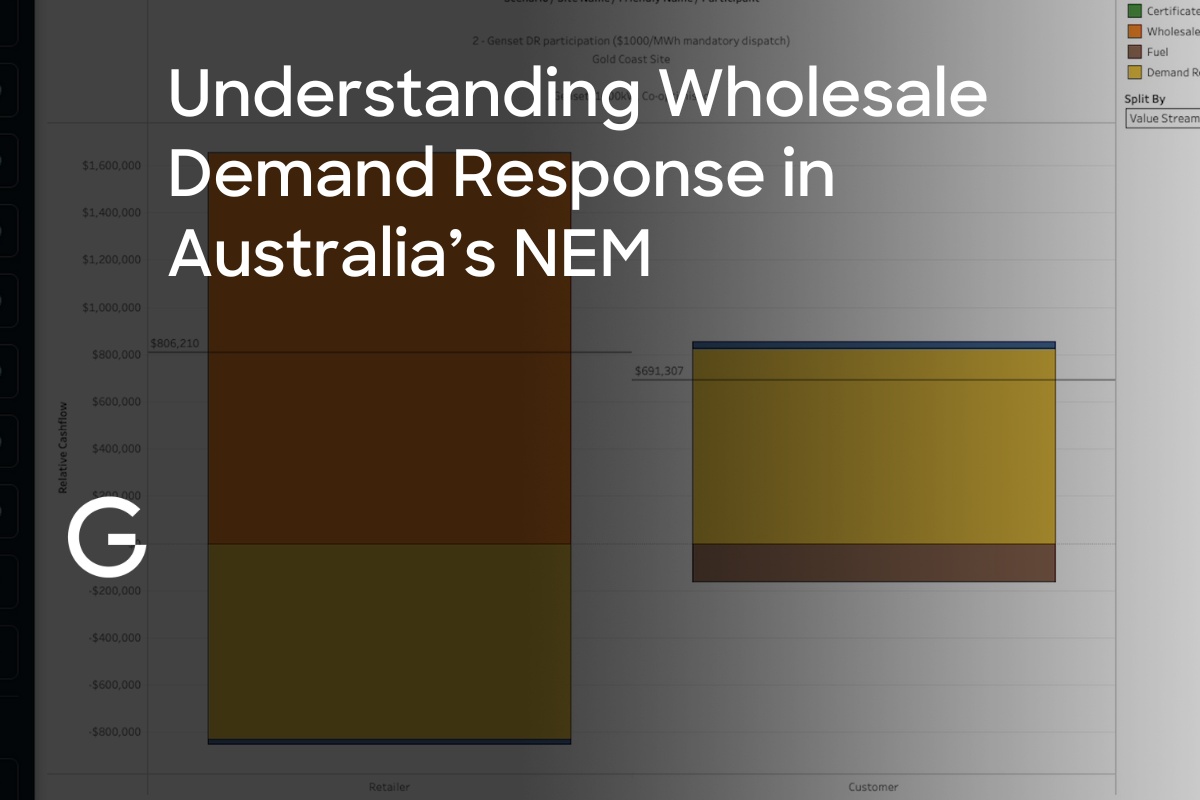Solar Feed in Tariffs in Australia: Who’s Getting a Raw Deal?

Introduction
In recent years solar feed-in-tariffs (FiTs) in Australia have been falling steadily to reflect both changes to the underlying wholesale markets, but also in acknowledgement by governments that solar no longer needs juicy FiT incentives to fly.
However, in many cases the FiTs are still very generous and continue to encourage customers to over-size their PV systems. That can create challenges for the distribution networks.
Note: the first draft of this post was written earlier in 2022 before the market turmoil in the NEM that led to the market’s suspension and subsequent elevated prices. We’ve re-run the modelling to cover that period, so this analysis covers April 2021 through to July 2022.
The model
We thought it’d be interesting to see where FiTs around the country currently sit relative to what you might consider ‘fair value’ (which is of course subjective).
To do that we used Gridcognition to model the same house and PV solar system in Brisbane, Sydney, Melbourne, Adelaide, Hobart and Perth. We compared the value the solar export would have earned based on the local FiT to the value it would have earned had that export been sold at the prevailing wholesale price – what you might consider the ‘fair value’ of the energy at that time.
In each case the load shape for the house remains the same but the solar system generates power based on the typical meteorological year (TMY) irradiance for the respective city. We included the residential load rather than just estimating the value of the gross solar generation since the timing of export relative to market pricing is an important sensitivity. Of course, the load shape would vary with the different climates in each city but we ignored that for the purposes of this exercise. It’d be interesting to do further analysis based on the typical load profiles for the different cities.
For the FiT we took the average of the published anytime residential feed-in-tariffs offered by Origin Energy, EnergyAustralia & AGL Australia in each state over the last 12 months. For Western Australia & Tasmania we used the government mandated rates. Other retailers offer different rates and there are now a number of time-of-use FiTs, but an anytime FiT offered by ‘the big three’ is probably fairly representative of the wider market.
For wholesale value we took prices for each NEM pricing node and for the WEM’s balancing market from April 2021 to July 2022 inclusive.
Results

This month-by-month breakdown of revenue under the FiT and wholesale scenarios includes the average unit value in ¢/kWh. The right panel shows a “fair value” measure from the homeowner’s perspective – the overpayment or underpayment from the FiT relative to wholesale price. A fair value delta of $0 indicates that the value earned from the FiT matched the value that would have been earned had that energy been sold into the wholesale market. A positive value implies that the residential solar owner receives more through the FiT than they would from the wholesale market. A negative value implies the opposite – that the revenue through the FiT is lower than the wholesale value of the exported energy.

This is an indicative week of 5-minute interval data for folks who enjoy the detail. Orange trace is wholesale price & blue trace is solar export.
Conclusion
- Melbourne is the best large city in Australia to have oversized rooftop solar, with Adelaide coming in second.
- The FiT in Hobart and Perth almost exactly reflects the underlying wholesale market value over the last 16 months
- Sydney and Brisbane solar owners might be getting a raw deal. Even before the recent wholesale increase Brisbane’s FiT was below fair value and in the last few months that’s been exaggerated
Future Work
In a future blog post we’ll look at how residential solar owners in the UK fare compared to their Australian cousins (spoiler: not very well!).
FiTs and other incentives schemes for renewable generation change quickly, and will surely continue to evolve as we go through a period of extreme volatility and transition in energy markets. Gridcognition’s simulation software can quickly model and analyse the economic impacts of different tariffs, market conditions and technologies. Please contact us if you’d like help to model and plan your DER projects.







